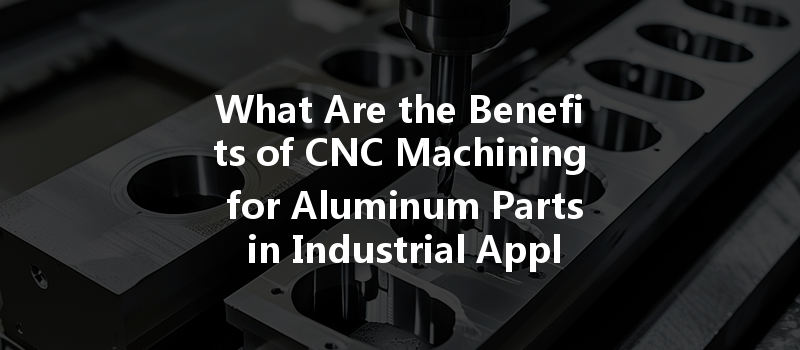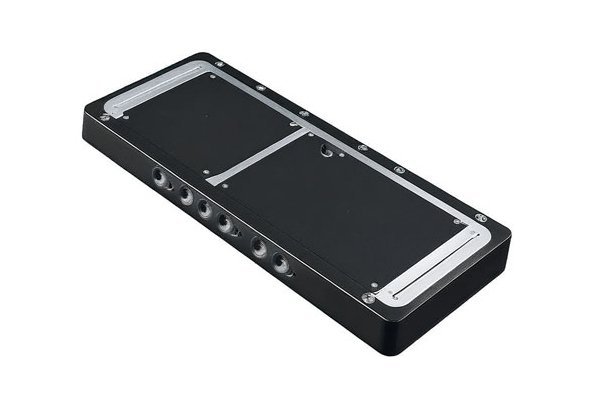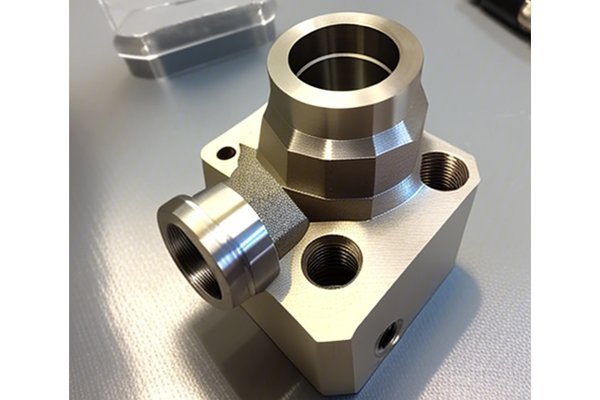Did you know that aluminum is one of the most abundant metals in the Earth’s crust and can be recycled indefinitely without losing its properties? This lightweight yet strong metal is increasingly being favored in various industries—from aerospace to automotive—thanks to its impressive strength-to-weight ratio and excellent corrosion resistance. As companies strive for efficiency, precision, and innovation, the process of CNC (Computer Numerical Control) machining has emerged as a game-changer in manufacturing aluminum parts.
In this comprehensive blog, we will delve deep into the benefits of CNC machining for aluminum parts, explore real-world applications, and provide solutions for common challenges faced in the industry. As we journey through this topic, you will discover why CNC machining is essential for high-performance aluminum components.
—
What is CNC Machining?
CNC machining is a modern manufacturing process that utilizes computer-controlled machine tools to create precise parts and components. Unlike traditional machining methods that are operated manually, CNC machining uses programmed commands to control the movement of machining tools. This technology not only enhances production speed but also allows for incredible precision, making it ideal for creating complex geometries—especially in aluminum components.
The CNC Machining Process
The CNC machining process begins with CAD (Computer-Aided Design) software that allows engineers to design the part’s shape and specifications. Once the design is finalized, the CNC machine is programmed to follow the specified parameters, including dimensions, shape, and finish. The CNC machine then cuts, drills, or mills the aluminum material based on the programming instructions, eventually producing a finished part that meets quality standards.
Precision and Accuracy
In industrial applications, precision is paramount. CNC machining excels in delivering exceptionally tight tolerances and repeatable accuracy, making it easy to produce multiple identical parts without deviation. This high level of precision is crucial in industries like aerospace, where even the smallest error can have serious consequences.
Versatility
CNC machining can be used to create a wide variety of aluminum parts, ranging from simple brackets to intricate assemblies. With the capability to handle diverse designs and specifications, manufacturers can efficiently produce small or large batches of parts, accommodating different project requirements.
Efficient Production
CNC machines can operate around the clock, significantly reducing production time. This increased efficiency allows companies to react quickly to market demands and minimizes lead times for their products. As a result, the ability to ramp up production without sacrificing quality provides companies with a distinct competitive advantage.
Reduced Waste
CNC machining optimizes the material usage, resulting in less waste compared to traditional methods. The precise cutting capabilities of CNC ensure that materials are utilized effectively, contributing to reduced costs and more sustainable manufacturing practices.
Improved Surface Finish

CNC machining not only focuses on dimensions but also on the surface quality of the parts produced. Advanced machining techniques allow for various finishes, which can range from raw to polished surfaces, catering to different functional and aesthetic requirements.
CNC machined aluminum parts find applications across numerous industries. Here are a few crucial sectors:
Aerospace Industry
In the aerospace sector, lightweight materials are essential for fuel efficiency and performance. CNC machined aluminum parts are extensively used in aircraft structures, engine components, and interior fittings. The ability to produce complex geometries while maintaining high precision makes them ideal for this demanding environment.
Automotive Industry
CNC machining plays a significant role in the automotive industry, where manufacturers rely on it for producing engine components, transmission parts, and various vehicle assemblies. The lightweight characteristics of aluminum help reduce overall vehicle weight, enhancing fuel efficiency and performance.
Electronics and Electrical Components
CNC machining is critical in the electronics sector for creating housings, connectors, and structural components for devices. The good thermal conductivity of aluminum makes it a preferred choice for thermal management in electronic applications.
Medical Devices
In the medical field, precision is key, especially when producing instruments, implants, and devices that directly interact with patients. CNC machining of aluminum allows manufacturers to produce lightweight yet durable components that meet stringent regulatory requirements.
Consumer Products
From bicycle frames to kitchen appliances, CNC machined aluminum parts are found in countless consumer products. Manufacturers can create custom designs efficiently, leading to innovative product development.
Even with its undeniable advantages, CNC machining of aluminum does come with challenges.
Tool Wear
Aluminum can cause rapid tool wear due to its softness and abrasiveness. Selecting suitable cutting tools and regularly monitoring their condition is vital for maintaining accuracy and production efficiency.
Heat Generation
CNC machining generates heat, which can adversely affect both the part and the tool. Excessive heat can lead to thermal damage, altering the properties of the aluminum and affecting the quality of the final product.
Complexity of Design
As part designs become increasingly complex, the programming required to create these parts can be more challenging. It necessitates advanced software and skilled operators to realize the intended specifications.
Cost Factors
While CNC machining can reduce waste and improve efficiency, the initial investment in CNC machinery and training can be significant. Companies must assess their production needs thoroughly to determine the feasibility of adopting CNC machining.
To address the challenges associated with CNC machining of aluminum parts, manufacturers can implement various solutions.
Selecting the Right Tools
Choosing cutting tools specifically designed for aluminum machining is crucial. High-speed steel (HSS) or carbide tools with appropriate coatings can enhance performance and prolong tool life.
Efficient Cooling Techniques
Implementing effective cooling systems, such as flood coolant or mist coolant, can help manage heat generation during the machining process. These systems lower the operating temperature, extending tool life and improving part quality.
Advanced Software for Design and Production
Utilizing advanced CAD/CAM software can streamline the programming process for complex designs, improving efficiency and reducing the risk of errors. These programs allow for simulations that predict machining outcomes before the actual production, enhancing precision.
Automating Processes
Incorporating automation in CNC machining, such as robotics for part loading and unloading, can significantly enhance efficiency. Automation reduces human error, cuts down on labor costs, and allows for higher production volumes.
To ensure successful CNC machining of aluminum parts, manufacturers can follow these best practices:
Material Selection
Choosing the right aluminum alloy is fundamental. Different alloys possess varying properties such as strength, corrosion resistance, and machinability. This selection directly impacts the ease of machining and the performance of the finished parts.
Design for Manufacturability
Creating designs that are optimized for CNC machining is crucial. This involves consideration of tolerances, features such as fillets and radii, and the feasibility of tool access. Designing parts with manufacturing in mind can help minimize costs and improve turnaround times.
Quality Control Measures
Implementing stringent quality control protocols is is required to ensure that parts meet specifications. This may include regular inspections during machining and final testing using precision measurement tools.
Regular Maintenance of Machinery
Routine maintenance of CNC machines reduces downtime due to equipment failures and enhances operational life. Establishing preventive maintenance schedules ensures the reliability and efficiency of production.
Emerging Technologies
As technology continues to evolve, CNC machining is undergoing significant changes. Innovations like additive manufacturing combined with CNC processes are leading to mixed-manufacturing strategies that create new possibilities for aluminum components.
Sustainability in CNC Machining
Sustainable manufacturing practices are gaining momentum. Recycling aluminum scraps from CNC machining processes and optimizing resource usage are steps manufacturers can take to reduce their ecological footprint.
Industry Trends
Recent trends indicate a growing demand for lightweight materials in manufacturing. As industries increasingly adopt aluminum for its advantageous properties, the role of CNC machining in producing complex aluminum parts will continue to expand.
and Key Takeaways
In summary, CNC machining presents a myriad of benefits for producing aluminum parts in industrial applications—ranging from unparalleled precision and efficiency to waste reduction and enhanced surface finishes. While there are challenges to be navigated, the right practices, tools, and technologies can significantly minimize these hurdles.
As industries evolve and the need for complex, lightweight, and high-performance components grows, CNC machining for aluminum parts will remain a critical process. Understanding the importance of this technology can not only help businesses stay competitive but also promote innovation in product design and manufacturing.
Reflecting on the content discussed, choosing CNC machining for aluminum parts is not just a matter of production; it’s about embracing a sustainable and our inevitable futuristic manufacturing approach. Whether you are a manufacturer, an engineer, or a business owner, understanding the intricacies of CNC machining for aluminum will empower you to make informed decisions that affect your operations and product success in the long run.






